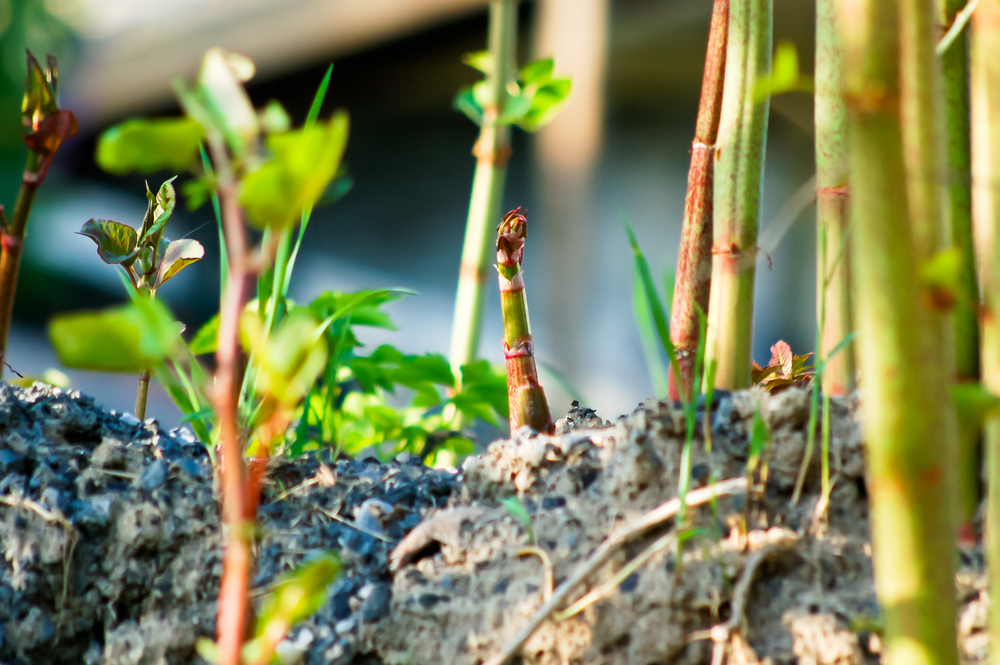First-time Buyer
Five hidden horrors that could derail your property purchase

Damp, rot, and Japanese knotweed are just some of the blights that can ruin a property purchase. Richard Sexton of esurv chartered surveyors explains why homebuyers must do their homework.
Picture this. After what seems like a lifetime of searching through listings and viewing properties you have finally found your perfect house. You have put in an offer, gone through the emotional rollercoaster of waiting to hear back and you are about to close the deal when you get the news that your mortgage application has been declined. Suddenly, you are watching your dream house slip out of your grasp.
Unfortunately this nightmare scenario sometimes becomes a reality. As part of the mortgage application process, your lender will instruct a valuer to provide them with a mortgage valuation report on the property you are buying before they provide you with the financial backing. If the valuer spots any serious problems to your future home, you could find your mortgage application turned down.
So what are the hidden horrors that could derail your property purchase?
Rising or Penetrating Damp
Dampness is not just that feeling you get after walking outside in a drizzle without an umbrella, it’s something that can affect your property as well. Rising damp is the rising of moisture up through the wall or floor. Symptoms include damaged skirting boards or plaster as well as peeling paint or wallpaper. Penetrating damp is caused by water leaking through the walls, which may expand across the walls, but in a horizontal rather than upward motion. The main symptom of penetrating damp is damp patches on the wall or ceiling that darken when it rains. Treatment of damp can cost anywhere between a few hundred and many thousands of pounds depending on the problem.
Subsidence
Subsidence is the gradual sinking or caving-in of land and can be caused by a variety of different things that involve the washing away or wetting of soil. It is often not easy to tell whether or not a house is subsiding but some symptoms include: new or expanding cracks in plaster or brick work, unexplainable sticking of doors or windows, and ripping wallpaper not caused by damp. The most common treatment is removal of trees because 70% of all subsidence cases are due to tree roots sucking moisture out of the soil.
Wet or Dry Rot
Rot is the deterioration or decay of something due to the presence of bacteria and fungi, most often occurring on timber. There are two types of rot – wet or dry – and while both are types of fungi, wet rot is the natural decay of wood due to high moisture levels, while dry rot is a fungus that destroys timbers. Dry rot can travel through beams and easily destroy multiple timbers, while wet rot is contained to one area. The two have similar symptoms but are identified based on feeling and colour of the affected area. Timber with dry rot will feel hard but brittle, while timber with wet rot will feel soft to touch. Dry rot tends to have a skin that is grey in colour while wet has a skin that is black, dark brown, or white.
Insects
Insect infestations are also a major issue. Woodworm in particular is fairly common, and can destroy the structural integrity of wooden timbers in the home as the beetles’ larvae burrow deep into wood. People with infestations will see holes in beams, floors and wooden furniture and may even find bugs or larvae in the house. Another feared pest, the death-watch beetle, is a type of woodworm that infests the centre of infected timbers. Since the insect is a deep wood borer, insecticide needs to be applied at the centre of the timbers in order for treatment to be effective.
Japanese Knotweed
Moving outside, Japanese Knotweed is another enemy to getting a mortgage. The plant was originally introduced as a decorative addition to gardens, but is now a major cause of mortgage refusals due to its destructive nature and the cost and difficulty of removal. Not only can it grow up to 20cm in a day, but it can also take root in small areas such as the crack of a broken pipe, and cause massive and expensive damage. The best treatment is professional disposal, and the cost can be between £3,000 and £5,000 for a severe infestation.
Beyond a mortgage valuation
Each of these issues can affect your chance of getting a mortgage because if left untreated they can cause serious damage to a property. Looking beyond a standard mortgage valuation – which is for your lender’s benefit – you may want to get a survey too. If you suspect that a future home may have any such issues, it is wise to commission a private house survey such as a HomeBuyer Report to assess the full extent of any damage and to get an idea of the cost of repair. A full list of these can be found on the RICS website. This will arm you with the information to negotiate down the purchase price of the property to cover the cost of repairs.
If you rely solely on the mortgage valuation commissioned by your lender, you could well find yourself committing to a house with an expensive hidden problem. Even worse, your mortgage could be turned down. Do your homework to save yourself the heartbreak.
Richard Sexton is business development director of e.surv chartered surveyors